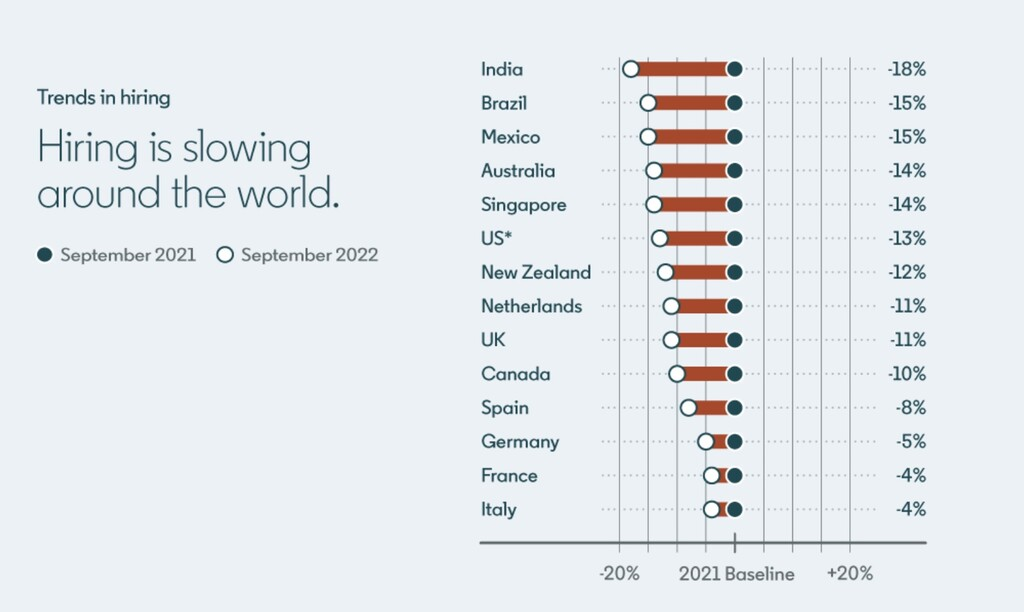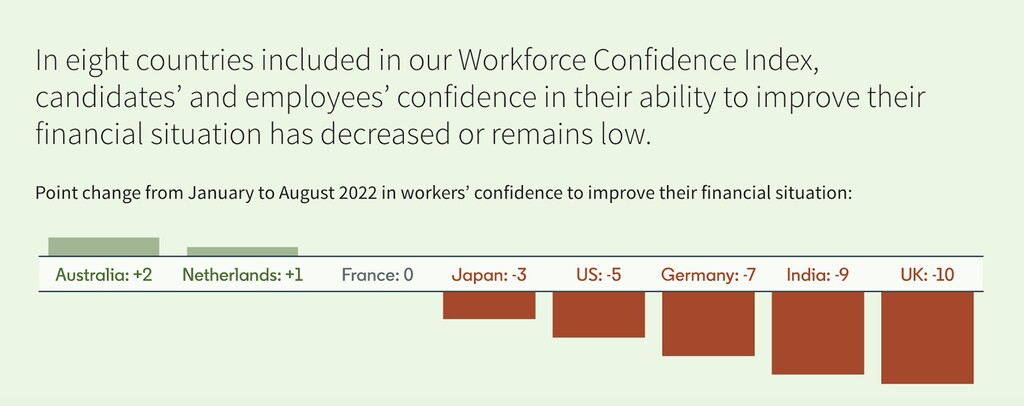Hiring rates are dropping but the competition for talent remains high. LinkedIn offers advice for employers to navigate an uncertain climate.
The Asia-Pacific (APAC) region has seen a slower rate of economic growth this year. As we propel full swing into post-pandemic recovery, hiring rates are also easing.
LinkedIn has released its latest Global Talent Trends report, which found that every global region saw hiring rates drop between September 2021 to September 2022. India saw the largest drop-off in this period with -an 18 per cent drop, while Singapore came in fifth with a -14 per cent decline.

According to LinkedIn Head Economist Pei Ying Chua, the uncertain economic climate means we can expect ongoing deceleration in hiring throughout the coming year. However, she notes that unemployment rates remain low, meaning employers still need to be at the top of their game when it comes to their employee value proposition.
“The labour market in APAC remains tight,” Chua says.
“As a result, in the coming year, it’s predicted that competition for talent with in-demand skills will remain fierce. In fact, LinkedIn data shows that skill sets for jobs have changed by around 25 per cent since 2015 and is expected to reach 40 per cent by 2025.”
To stay resilient in the face of this change, Chua says companies need to invest significantly in upskilling and reskilling their employees. They should also look at increasing opportunities for internal mobility, with data indicating that the companies that excel at this retain their employees for 5.4 years more on average – twice the number of companies that struggle with it.
LinkedIn sat down with 11 talent leaders from companies worldwide to understand how they’re navigating the uncertain hiring market going into 2023. Here’s some of their recommendations:
- Make every hire count
- Prepare your recruitment teams for the unknown
- Address candidates’ shifting priorities
- Focus on your company’s strategic priorities
- Strengthen the skills that are becoming increasingly important for recruiters
- Capitalise on talent acquisition teams being recognised as trusted advisors to decision makers
When it comes to workforce confidence, the Global Talent Trends report reveals that employees are concerned about the ongoing economic downturn.
Respondents in the Workforce Confidence Index survey feel their ability to improve their financial situation has decreased in the last six months. For employers, handling these concerns is critical for alleviating stress and mental strain, and understanding how this stress might impair work performance.

“You can’t eliminate uncertainty, but you can do your best to mitigate it for your employees,” says Guy Berger, Principal Economist at LinkedIn.
“Consider relatively low-cost, high-value benefits that you might have overlooked in the past. And don’t underestimate the calm that can follow when you reassure employees you hear them, and tough times aren’t forever.”
Finally, the report examined the top values, needs and priorities for employees and candidates. Interestingly, Australian workers value flexibility as more important than compensation.
“Companies that offered flexibility to their employees after the pandemic reinforced that an employee-centred approach demonstrated that leadership value how their employees are feeling, and they have individual needs to do their best work,” APAC Director of Talent Acquisition Emily Atkins says.
Given the uncertain economic climate, it is not surprising job security has also seen a strong rise over the last year. The number of employees wanting to make internal moves has also increased, suggesting that career growth and new opportunities are now key to talent retention.
“We know people want to learn and grow at work, regardless of economic and market conditions,” says Linda Jingfang Cai, Vice-President of Talent Development at LinkedIn.
“We’re moving into a phase of intelligent growth where you’ll see hiring teams being much more intentional about the hires they’re making and looking more at internal mobility opportunities,” says Amy Schultz, Global Head of Talent Acquisition at Canva.
To discover more insights, read the full Global Talent Trends report for Australia here.
Check out the LinkedIn Talent blog to find out how talent leaders are navigating a changing environment.

